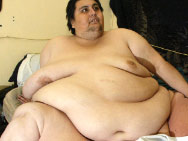Meal Replacements Products (MRPs) are either pre-packaged powdered drink mixes that you mix with water, milk, or juice and then drink; or bars that you eat. Both are consumed in the place of a whole-food meal. Generally MRPs are high in protein, low in fat, have a low to moderate amounts of carbohydrates, and contain a wide array of vitamins and minerals.
The majority of MRPs use whey protein, calcium caseinate or micellar casein, soy protein and Egg albumin as the protein source. Carbohydrates are typically derived from maltodextrin, oat fiber, brown rice, or wheat flour. Some also contain flax oil powder as a source of essential fatty acids (EFAs).
MRPs can also contain other ingredients that are deemed beneficial to bodybuilders. These can include, but are not limited to creatine monohydrate, glutamine peptides, l-glutamine, calcium alpha-ketoglutarate, additional amino acids, lactoferrin, conjugated linoleic acid (CLA), and medium chain triglycerides (MCT).
Prohormones
Prohormones are precursors to hormones - and were most typically sold to bodybuilders as a precursor to the natural hormone testosterone. This conversion requires naturally occurring enzymes in the body. Side effects are not uncommon, as prohormones can also convert further into to DHT and estrogen. To date most prohormone products have not been thoroughly studied, and the health effects of prolonged use are unknown. Although initially available over the counter, in 2004 their purchase was made illegal without a prescription in the US, as it now is in almost all countries and sporting bodies.
Creatine
Creatine is an organic acid naturally occurring in the body that supplies energy to muscle cells for short burst of energy (such as lifting weights) via creatine phosphate replenishment of ATP. A number of scientific studies have proven that creatine can increase strength, energy, and muscle mass in addition to reducing recovery time. Also, recent studies have shown that creatine improves brain function, improves recognition memory, and reduces mental fatigue. It increases what is known as cell volumization as it draws water into muscle cells, making them larger. This intracellular retention should not be confused with the common myth that creatine causes water retention (or intercellular water retention). Creatine is sold in a variety of forms, including Creatine Monohydrate, Creatine Ethyl Ester and Creatine Malate, among others. Though all types of Creatine are sold for the same purposes, there are subtle differences between them, such as price, water retention and necessary dosage.
Although some have theorized that creatine could be stressful to the kidneys (due to primary renal elimination via creatinine) this has not been proven in a scientific study.Thermogenic Products
Thermogenics is a broad term for any supplement that the manufacturer claims will cause thermogenesis – resulting in an increased metabolic rate, increased body temperature and consequently (the promise of) an increased rate in the burning of bodyfat. Until recently almost every product found in this supplement category was comprised of the "ECA stack": ephedrine, caffeine and aspirin (however these were normally found in their herbal form of Ma Huang, Kola nut or Guarana, and white willow bark, respectively). However, on February 6, 2004 the Food and Drug Administration (FDA) banned the sale of ephedrine and its alkaloids and manufacturers were forced to look for alternatives. Nowadays, the "ECA" stack is more likely comprised of bitter orange or Citrus aurantium (containing synephrine) instead of the ephedrine. To date the effectiveness of this new combination is far from conclusive.
Testosterone Boosters
There are several naturally-occurring plants and vitamins as well as synthetic chemicals that supplement companies claim may produce an increase in testosterone levels. However, the validity of many of these products is questionable due to a lack of valid scientific research showing their effectiveness at this time. The most commonly taken supplements of this type are ZMA and Tribulus terrestris.
A relatively new drug/supplement marketed as 6-OXO is gaining popularity as a estrogen blocker.Nitric Oxide Stimulators
Many studies show that nitric oxide (NO) acts as a signaling molecule that plays a vital role in causing the relaxation of the smooth muscle tissue that makes up the walls of blood vessels. NO freely crosses the endothelial cell membrane into the smooth muscle tissue of the blood vessels to facilitate vasodilation. Promoters argue this allows more blood and oxygen, and hence more nutrients to be delivered to muscle tissue, while increasing waste removal – aiding muscle growth. This is called active hyperemia. However, NO supplements do not actually contain nitric oxide but the amino acid arginine and other precursors such as citrulline, Pycnogenol, L-aspartic acid, and ginsenosides – which the body uses to synthesize NO.
NO supplements are at this time very controversial. While nitric oxide does give a noticeable increase in "pump" (muscle swelling during exercise), there exists little evidence to prove its effectiveness.
Some NO supplements also include creatine and high levels of mild stimulants like caffeine, the workout intensifying properties of such may be responsible for gains seen with NO products.

 The
The